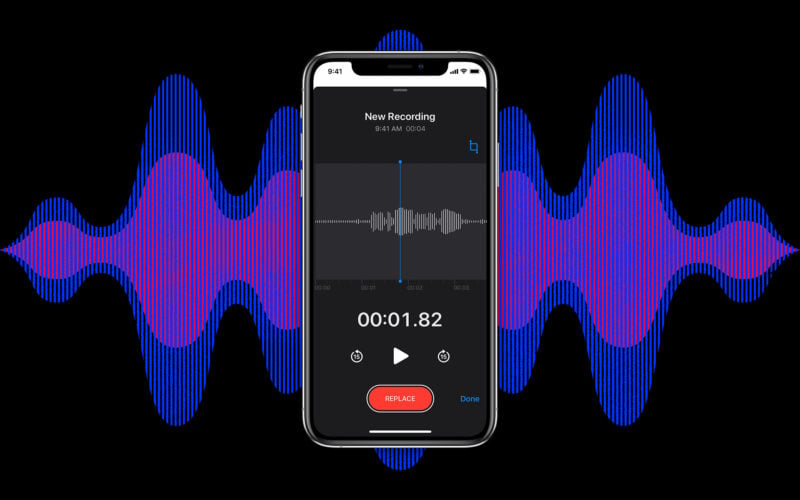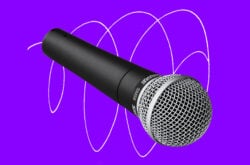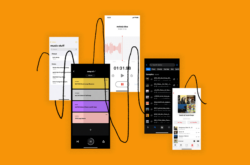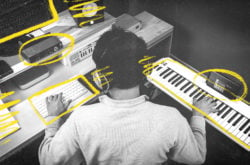Audio engineering is all about trade-offs and compromises.
An acoustically perfect environment, a perfect vocal performance, a perfect mix – these are in ways illusions, because human perception is subjective. My idea of ‘perfect’ will always be distinct from yours or anyone else’s.
That said, I think most engineers would agree that recording takes for a lead vocal on a phone is sub-optimal. Although we all wish we could be tracking a nice condenser microphone into a pristine signal chain, sometimes we have to make it work with the resources available to us. For many (myself included), these resources are currently limited to using our phones’ built-in mics.
That’s a problem, but as an audio engineer my job is to solve problems. So, in this post we’ll share a few tips around how to record vocals on your phone for the best quality possible, and then explore mixing and processing techniques that will help clean things up further.
Tips for recording audio with your phone
- Pick a quiet room without a lot of reflective surfaces. Don’t use your bathroom – although some people like to record in their bathroom, I find that the reflections from mirrors, tiles, and other common bathroom surfaces make vocal post-processing more difficult.
- Wear headphones while you record. It might sound really obvious to some, but don’t record the beat playing out loud, or else it’ll clash with the instrumental and ruin your mix when you put it all together. You might be surprised at how many artists don’t do this (not naming any names).
- Record multiple takes. When recording at home, you never know when someone will walk in, your cat will jump up on your desk, or a siren will go by. Get a few takes to work with so that you can always splice something together if an unexpected noise messes up part of an otherwise good-sounding recording.
- Turn off your fan or AC unit to remove background noise. I know it’s hard (especially in the summer), but it’s worth it for the time you’ll save trying to get that nasty fan noise out of your final product.
- Record at least five seconds of just silence. We’ll use this later to remove noise from the recordings.
Once you’ve got solid recordings from your phone mic, it’s time to process the audio.
Tips for processing audio captured with your phone
- Run a denoiser. Many denoisers work by analyzing clips of ‘silence,’ e.g. when there’s no performance being actively recorded. Then, they cancel the background noise from the intended recording. Since you recorded some silence in the previous step, it should be relatively easy to use an audio editor to denoise the signal. I love using iZotope’s RX for this, but if you want to use a free option, I also recommend trying out the denoiser in Audacity.
- Cut the low end out with a high-pass filter. Most phone recordings will have a significant amount of low-frequency noise; they tend to pick up ambient sounds that aren’t as audible in studio settings. Try filtering at ~80 Hz so that you maintain the character of the signal while hearing less noise.
- Use subtractive EQ to identify problematic frequencies. Basically, I just take a standard EQ plugin, crank the gain on one band with a relatively high Q, and slowly sweep up and down the spectrum, listening for anything that sounds bad. Then, reduce the gain to attenuate the problem frequency. This is an art that will take practice, but most engineers will tell you that EQ is one of the most important tools in their arsenal. For bonus points, try using a dynamic EQ for this; my favorite EQ plugin is FabFilter’s Pro-Q 3, but Neutron 3’s dynamic EQ module is also solid.
- Consider the stereo image of your recording. Your phone mic probably produces a stereo recording, but your intended sound source might be better replicated in mono. For example, sometimes I can improve lead vocals by knocking them down to mono, thereby removing much of the room sound from the recording. This can be hit-or-miss in my experience, so give it a shot but don’t be afraid to keep your recording in stereo if it sounds better that way.
Although using your phone to record isn’t ideal, hopefully this post helps you make your phone recordings the best they can be. It’s not easy, so don’t get discouraged and just keep working at it! If you can hone your skills enough to make a phone recording sound great, just think about what you’ll be able to do with a quality mic once you have access to one.
For more on what to do after you’ve captured your sounds, check out our more in-depth video tutorial on processing phone recordings.
Explore royalty-free sounds from leading artists, producers, and sound designers:
August 20, 2020



